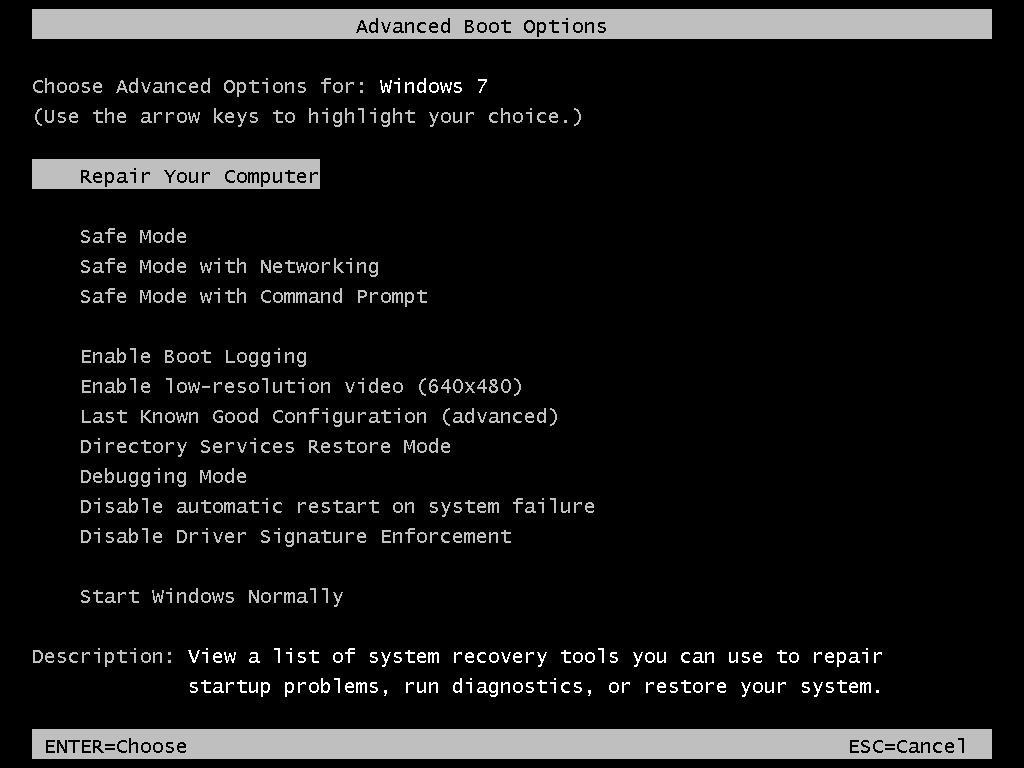“Advanced Boot Options” is a boot-time menu that can be displayed, providing various recovery options useful in attempting repair and recovery of damaged or incorrectly configured Windows PCs. This applies to Windows 10, Windows 11, and older versions including Windows XP, Vista, 7, and 8.
Contents
About the “Advanced Boot Options” Menu
Advanced Boot Options is the name of a recovery menu accessible immediately after the Windows bootloader begins to load. The exact list of features and boot options included in the Advanced Boot Options menu depend on the version of Windows installed, as does the appearance of the Advanced Boot Options menu itself.
The Advanced Boot Options menu can be used to access many different recovery options at boot time, some of which should only be attempted by very advanced users. If the options from this screen are not enough to repair a PC, bootable Windows recovery software specifically designed to find and fix errors with Windows computers may help.
Safe Mode
The most common use of the Advanced Boot Options menu is to gain access to Safe Mode. Safe Mode attempts to load Windows with as few components, features, and dependencies enabled as possible to possibly circumvent whatever components are not working. Safe Mode includes two other profiles, “Safe Mode with Networking” and “Safe Mode with Command Prompt.” The Safe Mode options are discussed further in-depth here.
Repair Your Computer
The “Repair Your Computer” option was added to the Advanced Boot Options menu in Windows 7, and it grants access to the Startup Repair feature. Not all Windows 7 PCs will have this option in the Advanced Boot Options menu, as the Startup Repair feature must have been installed to the disk (usually by Microsoft or the OEM) for it to appear. Otherwise, it can be accessed by booting from the Windows setup DVD on Windows Vista, 7, and 8.
Enable Boot Logging
This option tells Windows to write details about the boot-up process to a log. The log is stored in a text document with the name ntbtlog.txt in the %SystemRoot% folder (which is usually \Windows\). More information about boot logging is available here.
Enable low-resolution video
This option starts up Windows with advanced video options disabled. This lets you access Windows if you had previously set the graphics card to a resolution or frequency unsupported by your output device (monitor, projector, etc). It also uses basic VGA drivers from Microsoft, so if your PC problems are caused by a faulty graphics card driver, this will allow you to boot up your PC circumventing the bad driver and giving you an opportunity to replace or reinstall the graphics drivers as needed. Read more about the “Enable low-resolution video” here.
Last Known Good Configuration (advanced)
This is an important recovery option that starts your PC up using a backed-up copy of (a portion of) the Windows Registry. In case of failed Automatic Updates, an update or installation of buggy/incompatible drivers, changes in hardware configuration, and other problems, this option can be used to regain access to Windows. Learn more about Last Known Good Configuration to fix your PC and how to use Last Known Good Configuration to fix your PC.
Directory Services Restore Mode
While this option is listed for most versions of Windows, it only serves a purpose for Windows Server 2000, 2003, 2008, and 2012. You can read more about Directory Services Restore Mode and how to use it to roll back changes to Active Directory here.
Debugging Mode
This option is used by developers to attach a debugger to Windows, to monitor and catch bugs and exceptions in kernel-level code. This is usually only used by low-level system developers writing drivers or kernel modules and is discussed further in-depth here.
Disable automatic restart on system failure
Choosing the “Disable automatic restart on system failure” option from the Advanced Boot Options menu lets you view the details of a Blue Screen of Death (BSOD) during Windows startup. Windows normally reboots when it encounters a BSOD during boot, read more about disabling automatic restart on system failure here to learn how to see the details of startup BSODs.
Disable Driver Signature Enforcement
This option lets (certain versions of) Windows bypass driver signature checks. Hardware and driver developers that meet Microsoft’s requirements for trustworthy and well-written (well, “good enough”) drivers must cryptographically “sign” their drivers with a private key. On some versions of Windows, this lets you bypass these security checks for certain driver types, letting you load experimental or 3rd party drivers. More information on disabling driver signature enforcement can be found here.
Disable early launch anti-malware protection
This feature is only found on Windows 8 and disables early startup of anti-malware software such as Microsoft Security Essentials and Windows Defender. Read more about early launch anti-malware protection and why you would disable this feature here.
Start Windows Normally
As the name implies, this option is used to start Windows “normally” — in other words, with none of the above options selected/in-use.
As the Advanced Boot Options menu is actually part of the Windows bootloader, its appearance and functionality depends on which bootloader (NTLDR or BOOTMGR) is used to boot into the current version of Windows.





